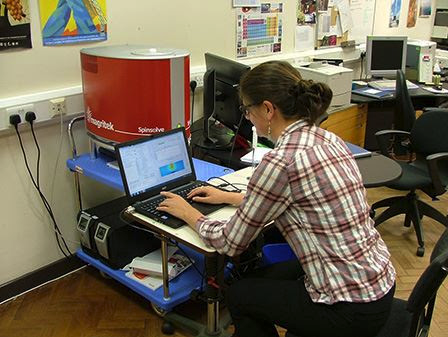Members Login

Channels
Special Offers & Promotions
Magritek Reports on How the Chemistry Department at Durham University is Applying the Spinsolve benchtop NMR for Research and Teaching
Magritek, a leading provider of compact NMR and MRI instruments, report on the use of their Spinsolve Benchtop NMR spectrometer in the Chemistry Department of Durham University.
 It is being applied to general NMR research, reaction monitoring and teaching at the undergraduate level. Dr Alan Kenwright is Reader in Spectroscopy and Manager of the solution-state NMR facility in the Chemistry Department at Durham University. His personal research is focussed on developing and using NMR techniques to solve a range of chemical problems, but in addition to that (and growing out of it), he works in collaboration with a number of other research groups looking at specific problems where specialist NMR techniques can make a significant contribution.
It is being applied to general NMR research, reaction monitoring and teaching at the undergraduate level. Dr Alan Kenwright is Reader in Spectroscopy and Manager of the solution-state NMR facility in the Chemistry Department at Durham University. His personal research is focussed on developing and using NMR techniques to solve a range of chemical problems, but in addition to that (and growing out of it), he works in collaboration with a number of other research groups looking at specific problems where specialist NMR techniques can make a significant contribution.
In choosing to use Magritek's Spinsolve, Dr Kenwright anticipates it will allow the extension of his work in various areas in ways that he could not otherwise. Spinsolve is not a replacement for the existing NMR equipment but is seen rather as a complement to these facilities extending the scope of what the group can do. Dr Kenwright has plans to use the equipment initially in three areas. He describes these:
“The first application is in looking at lanthanide complexes of the sort used as contrast agents for MRI. The details of the NMR characteristics of such agents are still not completely understood, which makes designing new, “functional contrast agents” a challenge. By “functional contrast agent,” I mean an agent that would respond selectively to some marker in the body, possibly highlighting the site of an abnormality. One key to this is to understand the behaviour of the agents as a function of the strength of the applied magnetic field, so being able to do measurements in the relatively low magnetic field (43 MHz) used by Magritek's Spinsolve is a big advantage for us, particularly as the field it uses it not very different to the field actually used in many hospital MRI scanners. These measurements using the Spinsolve are just starting to appear in the literature.” 1
Dr Kenwright continues: “The second is looking at real time reaction monitoring using flow-through NMR techniques. This is not a new idea, but has previously been limited by the requirement to bring the reaction close to a large (static) and expensive NMR spectrometer. The small size of the Spinsolve means that we can mount it on a trolley with an uninterruptible power supply (UPS) and move it around the department - taking the spectrometer to the fume cupboard where the reaction is being carried out. Working with partners in industry, we are evaluating this in parallel with small footprint Mass Spectrometry to see what relevance this approach might have not just in the University laboratory but also in pilot plants and possibly even at production scale.”
“Thirdly, we are planning to use the equipment in our first year teaching labs to allow students to go through the whole process of preparing and running an NMR spectrum for themselves. As many process become more automated, the opportunities for students to get involved “hands-on” become less, so exposing them to a robust, simple instrument they can use themselves is a big plus.”
Media Partners


